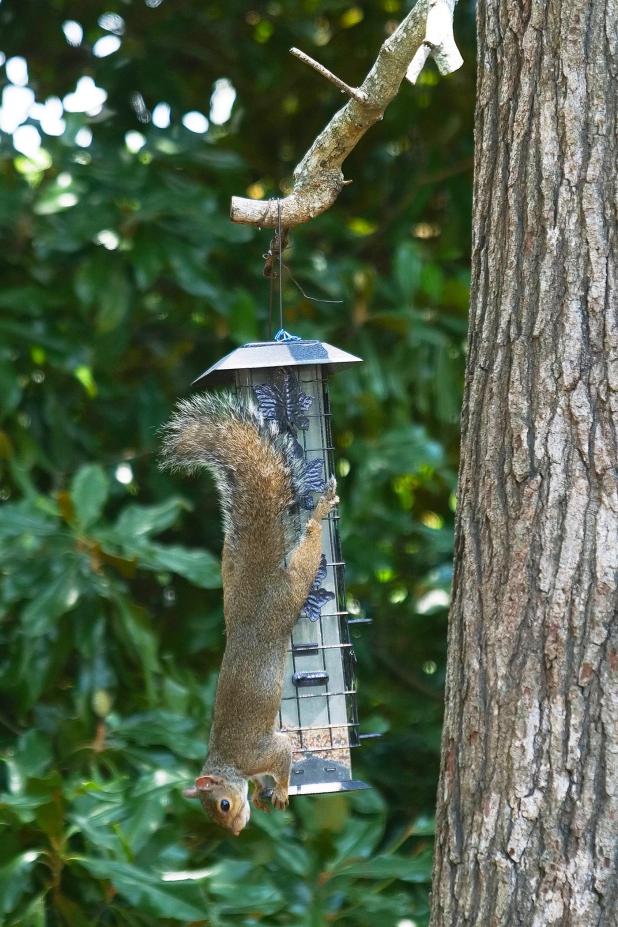
Provide seeds and other types of bird food during winter to help birds during the toughest time of the year. Other wildlife need food too — but if you want to focus on feeding birds, try using feeders designed with features that prevent squirrels from accessing the seeds inside.
—LSU AgCenter/Olivia McClure
Get It Growing: Feeding local feathered friends
Nearly 30 years ago, the first National Bird-Feeding Month was celebrated. Since then, we are reminded every February to take extra care of our feathered friends during the harshest part of the winter when resources are scarce. Feb. 1 began the celebration of National Bird-Feeding Month, and everyone is invited to participate.
February marks one of the most difficult months in the last stretch of wintertime for birds. Many birds flee the northern regions to overwinter somewhere warmer down south to avoid freezing temperatures and find climates with a more consistent food supply.
There are two main reasons birds take flight to warmer climates. First off, birds need to maintain an elevated body temperature of about 105 degrees Fahrenheit to stay active. To compound the issue of lower temperatures, winter also is a difficult time for birds to find food — but this is the time of year when it is most needed as fuel to keep them warm. Their task is to maximize calorie intake and minimize calories spent.
Anyone can help by supplying food, water and sources of shelter for wild birds during this time. As gardeners, we may not realize all of the many opportunities we have to help feed the birds by selecting plants that provide food and shelter. There are many plants that birds use as sources of food, including trees, shrubs, ornamental grasses and perennials.
Many birds feed on a diet of seeds in addition to a wide variety of insects — especially caterpillars. What is important to remember is that those caterpillars and insects feed on leaves and other parts of plants. Many insects are host plant specialists, meaning they prefer a specific plant. One powerful example of host specificity is oak trees, which support nearly 500 species of caterpillars alone. Talk about a lot of bird food!
Turns out that caterpillars are some of the most nutritious of the insect foods. By providing a diverse selection of plants in your garden, you can provide more food for caterpillars and, in turn, for birds and other wildlife. Additionally, we can place bird feeders, birdbaths and birdhouses in our gardens that also benefit our feathered friends.
When selecting plants to support birds, choose a diverse selection of perennials, ornamental grasses, shrubs and trees, especially native ones that support native insects and birds. One great source for selecting plants is provided by the National Audubon Society. Its mission is to help conserve habitat and protect birds.
You can use your ZIP code to help find plant species that support birds in your area. The website even tells you what specific bird species each plant supports if you are fan of a particular bird species and where you can find plants. Visit www.audubon.org/native-plants.
Louisiana has many native plant species that support birds. Starting with trees, some great selections for birds are beeches, birch, cedars, cypress, dogwoods, elms, hollies, maples, magnolias, oaks, pines, sweet gum, oaks and many others.
A brief list of native shrubs for Louisiana are American beautyberry, arrow-wood, blackberry, buttonbush, rabbit-eye blueberry, possumhaw and spicebush.
Flowering perennials not only provide food for birds, but also offer excellent color for your landscape. Incorporate beautiful flowers that can be shared with birds, brighten your landscapes and many can be cut and brought indoors. Here is a brief list of perennials: asters, beebalm, black-eyed Susan, blanket flower, blue phlox, cardinal flower, common boneset, coneflower, goldenrod, milkweed, sages, sunflowers and yarrow.
Ornamental grasses that are bird friendly are eastern mock grama grass, muhly grass, Indian wood oats, little false bluestem, side-oats grama and panic grass.
With so many plants to choose from, you can help feed the birds in many ways. If you wish to learn more about birds in general, the first place to start is with, of course, LSU at www.lsu.edu/science/birdoffice/. Another excellent online source is the Cornell Lab of Ornithology at www.birds.cornell.edu.
In addition, there are activities such as Birding at Burden where you can learn more about birds in your area. Check the LSU AgCenter website for activities and opportunities to learn more about birds and plants that support them across the state.
If you wish to learn more about birds on your own, there are many smartphone apps that can help on your bird learning quest. Look for the extension publication “Get Appy! Nature Guides for Your Mobile Devices” by AgCenter wildlife specialist Ashley Long and horticulture agent Will Afton at www.lsuagcenter.com/articles/page1547741648309.
